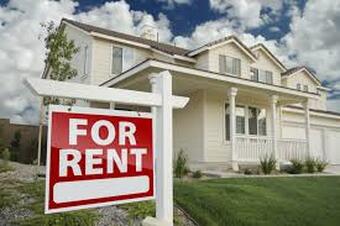 Last week we went over the basics of investing in real estate through Private Lending. This week we will move into the most well known technique in real estate investing, Buy and Hold Investing. This technique has created generational wealth for millions of people worldwide and continues to grow fortunes for people ranging from small mom & pop landlords to multi-billion dollar real estate corporations. Definitions: Buy and Hold - Buy and hold investing is pretty self explanatory; an investor purchases property that they will own with the intent of renting it to a tenant for positive cash flow and/or holding on to the property long term in hopes of price appreciation creating a profit at sale. There are lots of "sub-techniques" to buy and hold investing but we are going to cover the basics of residential rental properties. Residential Real Estate - Residential real estate includes vacant land, houses, condominiums, and townhouses. Residential real estate can be either single family or multifamily dwellings. (For lending purposes complexes consisting of more than 4 units are typically considered commercial but we are going to lump these into residential for our discussion) Commercial Real Estate - Commercial real estate includes non-residential structures such as office buildings, warehouses, retail buildings, or storage units. How it works: Buy and hold investing is just it like it sounds, you buy a property and then hold on to it while earning passive cash flow and growing the equity (difference between the value of the property and what you owe on that property). There are five major ways that you will profit from a successful buy and hold real estate investment:
How to invest: Investing in buy and hold real estate requires you to decide what type of property best suits your style (i.e. single family home, small apartment complex, etc.) as well as what market you want to be in. It has become increasingly easier to invest in distant markets so don't fret if your home market doesn't make sense. You will need to assemble a team consisting primarily of a real estate agent, mortgage broker, property manager, and contractor (if you plan to do any rehab). Look for properties that can purchased at a price that allows you to make some cash flow after all of the expenses are paid. I also recommend looking in markets with a stable or growing economy and diverse job base. In another post, I will go through the basic underwriting you need to do to see if a property will cash flow. Pros:
Where to get more information: Bigger Pockets Guide to Buy and Hold Investing Buy and Hold Real Estate An Investors Guide Next week we will go over a technique known as Wholesaling. Wholesaling is a great way to get started in real estate investing when you have very little cash but have the time and hustle to find great deals for other investors. Please reach out to me with any questions or comments using the comments button or through the contact page on my web site. If you would like to talk more about any of these investment methods or discuss how we can partner together, please contact me.
0 Comments
Leave a Reply. |

 RSS Feed
RSS Feed